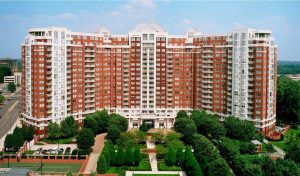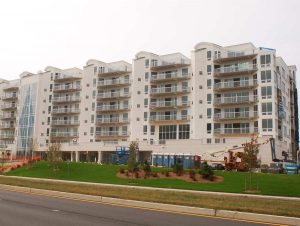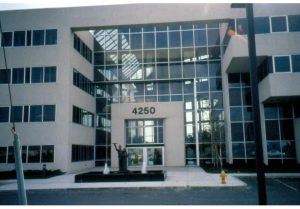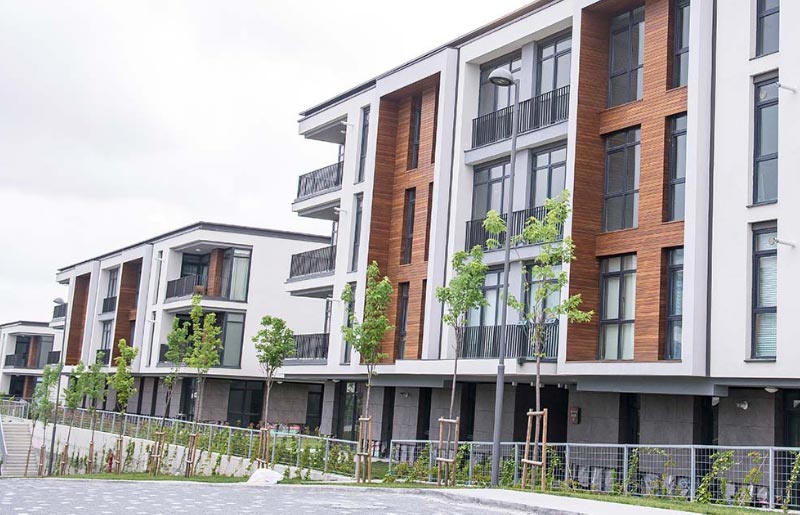
Contact Vescom
Composite Joist Structural Floor Systems Alabama
Vescom’s composite joist construction floor system offers stronger and shallower floors at a fraction of the cost of traditional steel floor framing methods.
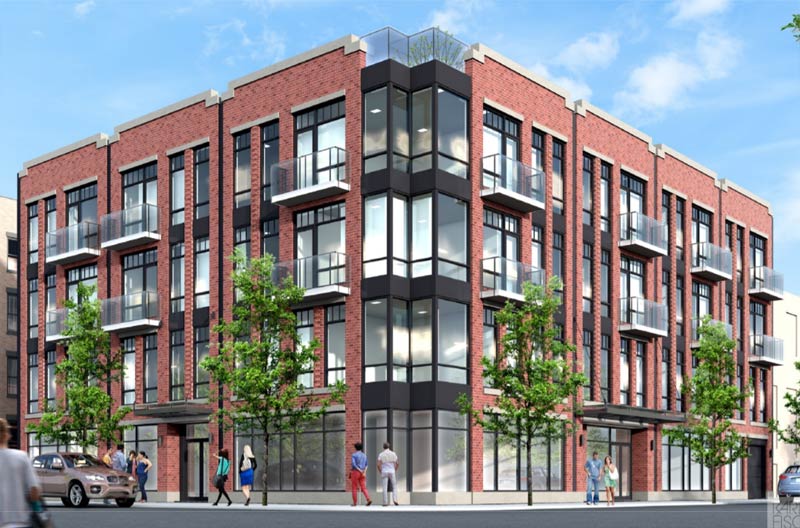
Vescom International is a steel joist and structural floor system manufacturer. The Vescom Joist Structural Floor System can be used all types of multi-story residential, multi-residential, institutional, healthcare, and commercial constructions and buildings. Vescom Joists can be used to construct structures up to 19 stories and are ideal for:
- Multi-residential constructions
- Apartment Buildings
- Condominiums
- Student Housing
- Hotel and Resorts
- Senior Living and Nursing Homes
- Medical Facilities
- Office Buildings
- And Many Other Structures
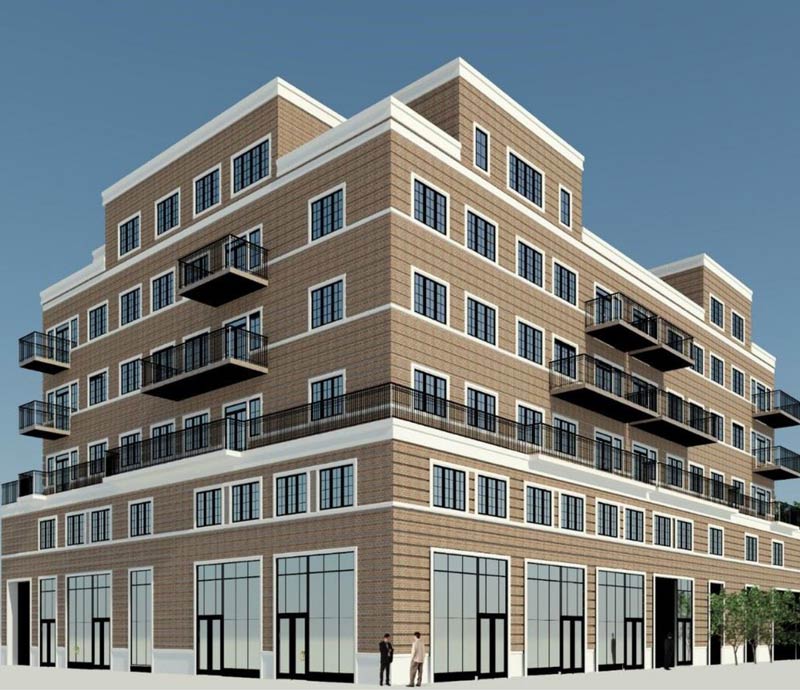
Composite Floor Joists in Alabama, AL
Vescom International manufactures the following composite joist flooring solutions and delivers them to Alabama, AL:
- Composite joists
- Composite floor joists
- Steel floor framing
- Concrete joist system
- Concrete joist support
- Steel flooring system
- Structural flooring
- Structural floor system
- Joist slab
- Structural floor systems
- Light gage steel framing
- Steel floor joists residential
- Composite building
- Structural floor
- Composite floor systems
- Steel floor system
- Composite concrete flooring
- Steel frame flooring
- Steel flooring systems
- Floor joist system
- Concrete floor joist
- Suspended floor systems
- Concrete floor joists
- Steel roof decks
- Metal deck
- Roof decking
- Steel deck
- Joist girder
- Steel girder truss
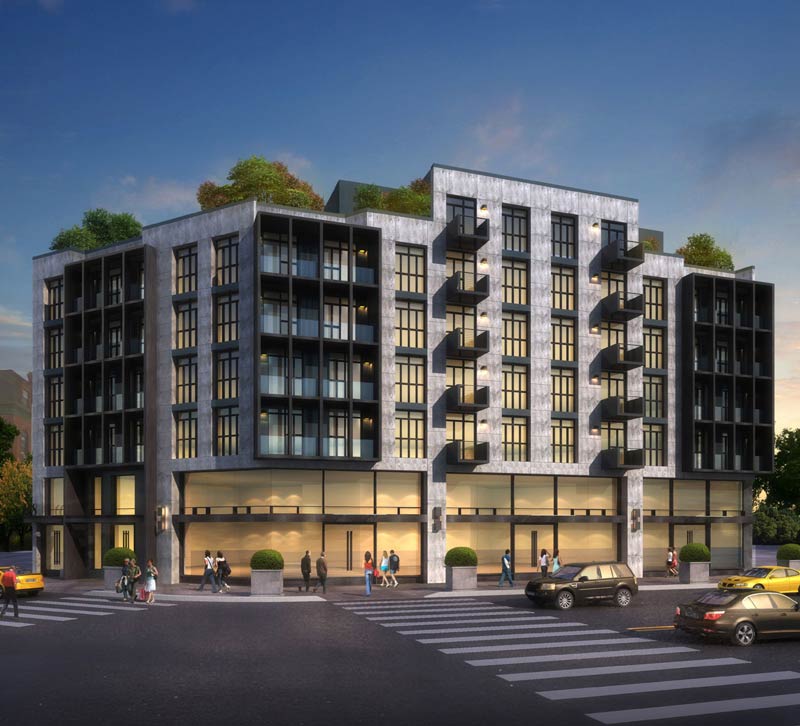
Multi-Residential Construction in Alabama:
If you are searching for a company to provide any of the following in Alabama, AL, kindly consider sending your drawings to our team at Vescom. We will provide you with a quote using our composite joist system that could save you significantly on your construction costs.
- Metal deckings
- Composite deck
- Floor systems
- Rated floor
- Cold form steel
- I-span
- Steel components
- Wood joists
- Floor structure
- Steel beams
- Steel trusses
- Floor joist
- Ceiling joist
- Decking joists
- Floor trusses
- Steel joist
- Bar Joist
- Steel deck
If you are searching for a company to provide any of the following, kindly consider sending your drawings to our team at Vescom. We will provide you with a quote using our composite joist system that could save you significantly on your construction costs.
Frequently Asked Questions
Q: What is a composite joist?
- A: A composite joist, also known as a composite steel joist, is a type of structural member used in construction to support floors and roofs. It is made by combining two or more materials, usually steel and concrete, to create a stronger and more efficient joist.
Composite joists typically consist of a steel top chord, a steel bottom chord, and a concrete slab sandwiched between them. The steel chords provide tensile strength and rigidity, while the concrete slab provides compression strength and mass. The combination of these materials results in a lightweight and durable joist that can span long distances and support heavy loads.
Composite joists are commonly used in commercial and industrial buildings, as well as in multi-story residential buildings. They offer several advantages over traditional joists, including increased strength, stiffness, and fire resistance, as well as improved acoustic and thermal performance.
Q: What is structural flooring?
- A: Structural flooring refers to a type of flooring system that is designed to provide both a walking surface and structural support for a building or structure. Unlike non-structural flooring, such as carpet, vinyl, or tile, structural flooring is capable of bearing heavy loads and transferring them to the building's foundation or support structure.
Structural flooring is commonly used in commercial and industrial buildings, such as warehouses, factories, and distribution centers, as well as in multi-story residential buildings. It is also used in bridge construction, where it serves as both a roadway and a structural element.
There are several types of structural flooring systems, including concrete slabs, precast concrete planks, steel decking, and composite joists. The choice of flooring system will depend on a variety of factors, including the building's design, the required load-bearing capacity, and the desired aesthetic appearance.
Overall, structural flooring plays a critical role in the overall strength and stability of a building or structure, and it is an essential component of any construction project that requires durable and reliable support.
Q: What are steel trusses?
- A: Steel trusses are a type of structural element commonly used in the construction of buildings, bridges, and other structures. They are typically made from steel beams arranged in a triangular pattern, with each beam forming one side of the triangle.
The triangular shape of steel trusses provides excellent strength and stability, allowing them to span long distances and support heavy loads without the need for intermediate columns or supports. This makes them ideal for use in large, open buildings and structures, such as warehouses, factories, and sports arenas.
Steel trusses can be manufactured in a variety of shapes and sizes, depending on the specific needs of the project. They can be straight or curved, and may be designed to have a single or multiple web configurations. Additionally, they can be bolted, welded, or riveted together to form larger assemblies, depending on the required load capacity and structural performance.
Overall, steel trusses are a versatile and durable structural element that offer many advantages in terms of strength, stability, and ease of construction. They are commonly used in a wide range of applications and are an essential component of many modern construction projects.
Vescom International provides exceptional structural performance, unmatched in the marketplace, for multi-level construction in the following states in The United States of America:
Alabama, AL – Alaska, AK – Arizona, AZ – Arkansas, AR – California, CA – Colorado, CO – Connecticut, CT – Delaware, DE – Florida, FL – Georgia, GA – Hawaii, HI – Idaho, ID – Illinois, IL – Indiana, IN – Iowa, IA – Kansas, KS – Kentucky, KY – Louisiana, LA – Maine, ME – Maryland, MD – Massachusetts, MA – Michigan, MI – Minnesota, MN – Mississippi, MS – Missouri, MO – Montana, MT – Nebraska, NE – Nevada, NV – New Hampshire, NH – New Jersey, NJ – New Mexico, NM – New York, NY – North Carolina, NC – North Dakota, ND – Ohio, OH – Oklahoma, OK – Oregon, OR – Pennsylvania, PA – Rhode Island, RI – South Carolina, SC – South Dakota, SD – Tennessee, TN – Texas, TX – Utah, UT – Vermont, VT – Virginia, VA – Washington, WA – West Virginia, WV – Wisconsin, WI – Wyoming, WY
VESCOM News:
A Revolution in Structure
Explore our website to see how Vescom is revolutionizing the construction industry.
Vescom Typical Details
To assist in the work of specifying professionals, we have developed typical Vescom details for their use. These details...
Fun Facts About Alabama
- Capital: Montgomery
- Year Founded: 1819
- Major Cities: Birmingham, Montgomery, Mobile, Huntsville, Tuscaloosa
- Borders: Florida, Georgia, Mississippi, Tennessee, Gulf of Mexico
- Gross Domestic Product (GDP) Millions USD: $183,547
- Population: 4,447,100
- Land Area (Sq Miles): 51,609
- High Point (Feet): 2,407
- Other Facts: “Key Industries: Agriculture (poultry, peanuts, cotton, grains, soybeans, peaches) Iron and Steel production, paper, lumber, coal mining Automobile manufacture How Alabama got its name: The name Alabama comes from a Native American tribe that lived in the middle of the state. They named the local river the Alabama River and the state took its name from the river. State Nickname: Heart of Dixie State Slogan: Share The Wonder; Stars Fell on Alabama (on its license plate); (formerly) The Heart of Dixie State Motto: Audemus jura nostra defendere (We dare defend our rights) State flower: Camellia State Bird: Yellowhammer aka Northern Flicker State Fish: Largemouth bass (freshwater), Fighting tarpon (saltwater) State Tree: Southern Longleaf Pine State Mammal: Racking horse : Pecan, Blackberry Date Admitted: Tuesday, December 14, 1819 Number Admitted: 22 Prior Name: Alabama Territory Postal Abbreviation: AL The Geography of Alabama: Total Size: 50,744 sq. miles (source: 2003 Census) Geographical Low Point: Gulf of Mexico at Sea Level (source: U.S. Geological Survey) Geographical High Point: Cheaha Mtn. at 2,407 feet, located in the county/subdivision of Cleburne (source: U.S. Geological Survey) Central Point: Located in Chilton County approx. 12 miles southwest of Clanton (source: U.S. Geological Survey) Counties: 67 (source: National Association of Counties) Bodies of Water: Gulf of Mexico, Tennessee River, Alabama River, Chattahoochee River, Coosa River, Weiss Lake, Martin Lake, Lewis Smith Lake, Walter F. George Lake Famous People: Hank Aaron – Baseball player; George Washington Carver – Scientist: Jefferson Davis – President of the Confederacy; Nat ‘King’ Cole – Singer and musician; Helen Keller – Deaf and blind political activist and author; Harper Lee – Author who wrote To Kill a Mockingbird ; Carl Lewis – Gold medal track and field athlete; Willie Mays – Baseball player; Jesse Owens – Gold medal track and field athlete; Rosa Parks – Civil rights activist; Condoleezza Rice – Secretary of State; Booker T. Washington – Educator More Fun Facts: Huntsville, Al is the home to Space Camp and the world’s biggest Space museum.; Montgomery, Al was the capital of the Confederate States.; George Washington Carver lived in Alabama when he came up with peanut butter.; The Wright brothers started the first flight school in Alabama.; Fort Payne makes over 70 million pairs of socks a year. It’s called the sock capital of the world; The first electric trolley was introduced in Montgomery in 1886.; Baseball players Hank Aaron and Willie Mays were both born in Alabama.; The world’s largest cast-iron statue, called The Vulcan, is in Birmingham. It is 56 feet tall!; The football game between the University of Alabama plays Auburn University is one of the biggest rivalries in all of sports. The game is named the Iron Bowl. Professional Sports Teams: Alabama has no major Professional Sports Teams.” Citation: Nelson, Ken. “United States Geography for Kids: Alabama .” Ducksters, Technological Solutions, Inc. (TSI), https://www.ducksters.com/geography/state.php?State=Alabama
- Page ID: Alabama_United_States_1
- Set ID: United_States_State

